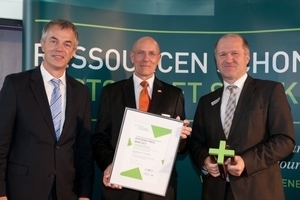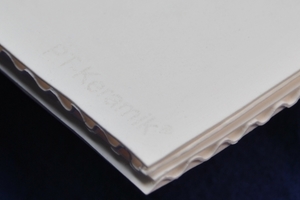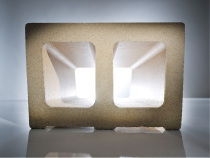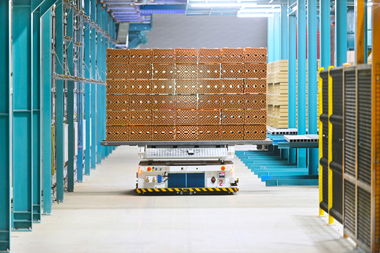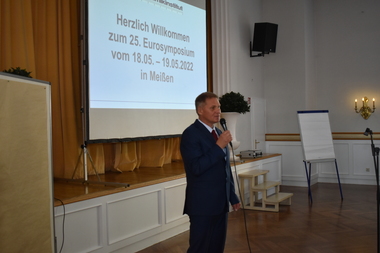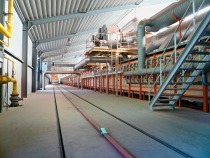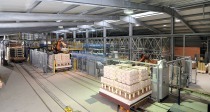Light ceramics carry heavy roof tiles
WZR ceramic solutions has been awarded the Northrhine-Westphalian Efficiency Prize for 2013 from Effizienz-Agentur NRW for developing what they call their “PT-Keramik“. This innovative high-tech material enables 80% to more than 90% reductions in the ceramic industry‘s kiln furniture and energy requirements. As an innovative combination of paper and ceramic material, it displays high structural stability despite a much-reduced material input.
WZR‘s product idea: PT-Keramik
PT-Keramik has little in common with ordinary firing shelves made of conventional ceramics. While the customary type of support measuring 30 x 30 cm by 2 cm thick weighs some 4.5 kg, an equal sized high-tech support made of this new material weighs in at a mere 0.5 kg – with no loss of load carrying capacity. Why? Because PT-Keramik is structured and layered. In the course of production, the material can be bent, cut and bonded into different shapes, e.g., with a gridlike or corrugated structure similar to that of crinkled cardboard. That makes PT-Keramik much more stable despite its low weight. The individual ceramic structures are only one mm thick.
Just how much material can be saved by employing this new product is demonstrated by this example from roof tile production: Each year, German companies use some 3.15 million tons of kiln furniture to produce around 2.1 million tons of roof tiles. By switching to PT-Keramik, those roof tile producers could slash their annual kiln furniture requirement by 80% to only 0.63 million tons. The amount of energy consumed for heating the much-lighter PT-Keramik would be lower by approx. 1.500 GWh. This would also accelerate the firing process, because less overall mass would have to be heated and would subsequently cool down more quickly.
Inspiration from the paper industry
The term PT-Keramik stands for paper-technologically produced ceramic material. In the papermaking process, it is long-standing practice to add kaolin to the fibre pulp to make the paper smoother, more flexible and whiter. Accordingly, the starting material for PT-Keramik is so-called highly filled paper, i.e., paper containing a large proportion of ceramic filler like alumina, vitrified clay or cordierite. Despite its high filler content of more than 85%, such “preceramic” paper can be folded, corrugated or otherwise reshaped as desired in order to give it higher structural strength. Then, depending on the employed ceramic filler, it is heated to between 1 250 and 1 600° C and, hence, converted to a ceramic material characterized by high stability.
WZR ceramic solutions launched the first laboratory tests for developing PT-Keramik in late-2008. Production trials began two years later on an industrial papermaking machine, and the Rheinbach-based enterprise first displayed the resultant kiln furniture at trade fairs in 2012. Preparations for large-scale industrial production are under way.

